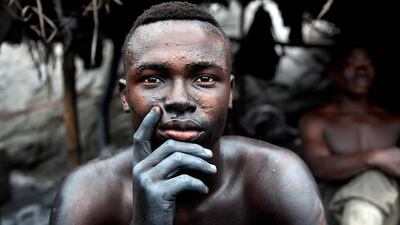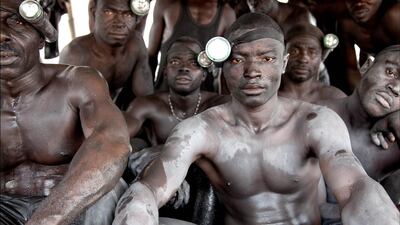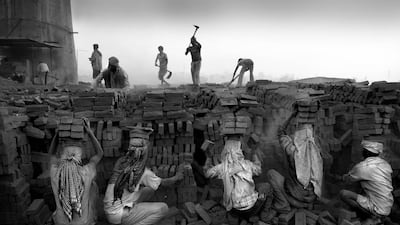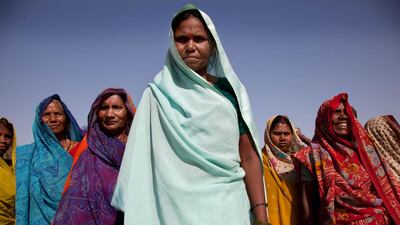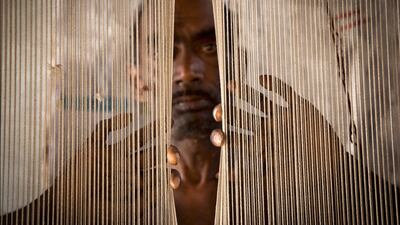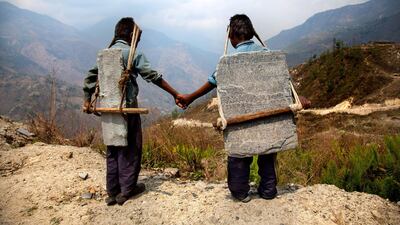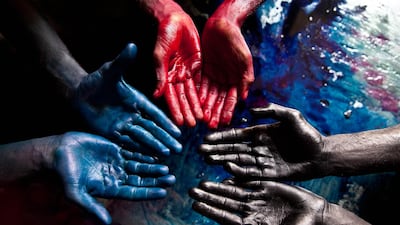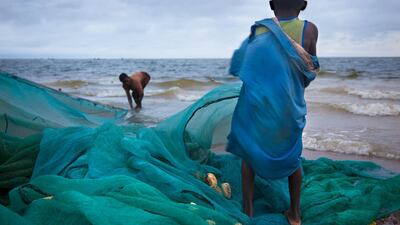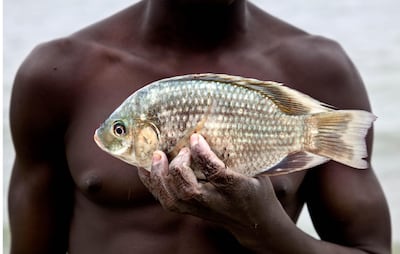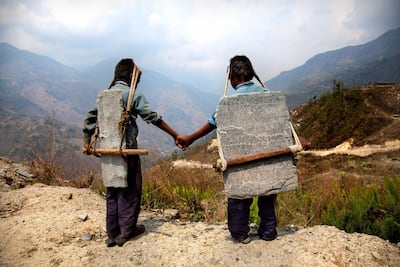Sixty metres underground, Lisa Kristine is enveloped in darkness. It's hard to breathe. The air is heavy with dust and fumes, and she feels the heat of bodies shuffling around in the shadows. She can hear the sound of tools hitting stone, of men coughing. They are in an illegal mine in Ghana. The men are here to break stone and carry the pieces to the surface in the hope that some of the fragments might contain gold. But, Kristine is here for something else – their photographs.
Above ground she takes pictures of the young men and boys who pound the stones and pan for gold. Their arms are coated in fine powder. Their faces are drenched in sweat. Kristine is documenting more than the miners' back-breaking labour; she is capturing the faces of modern-day slavery.
A self-described "native San Franciscan", Kristine has established her career photographing indigenous people around the world. She recalls being fascinated by images of tribes in her mother's National Geographic magazines and anthropology books. "I believed they were unshakeable," she recalls. "I remember thinking, 'What is it that they have?' Because I needed that in my own life."
At 18 years old, she left home and travelled to numerous places, including Kenya, Peru and Bhutan, to emulate the inspiring images she had seen in her childhood. Then in 2009, a conversation changed her life.
While exhibiting her photographs at the Vancouver Peace Summit, she met someone from Free the Slaves, a non-profit organisation fighting modern-day slavery. "I had known that trafficking existed, but I just had no idea of the sheer numbers. It really struck me," she says.
The numbers are indeed staggering. More than 40 million people are enslaved around the world, according to the Global Slavery Index. That is more than the transatlantic slave trade, which held 13 million people in bondage from the 15th to 19th centuries.
Today's figures include those in forced labour, which accounts for more than half of victims at 24.9 million, and forced marriages. Women and girls are disproportionately affected, accounting for 71 per cent of the victims.
Though they are no longer in shackles, modern-day slaves are still bound by fear and the threat of violence. The problem cuts across various industries, including domestic work, textiles and garments, agriculture, fishing, mining and construction. It is highly profitable, generating as much as $150 billion (Dh550.87bn) every year.
After that meeting, Kristine struggled to sleep for weeks. She flew to Los Angeles to talk to the founders of Free the Slaves about ways in which she could help. By connecting her to their network of abolitionists in various countries, she was able to visit villages and cities where slavery persisted – mines, textile factories, fishing towns. "It was strange because you can pass by these things every day and just assume that the people there are working, but you don't have any notion that they have no rights or that they're not getting compensation. In that regard, slavery hides in plain sight," she says.
Her first trip was in 2010, to the brick kilns of India. The second-largest brick producer worldwide, the country has 200,000 kilns with an output of 250 billion bricks a year. Kristine visited a kiln in Uttar Pradesh, where men, women and children were all involved in the process, from moulding the clay to stacking and loading bricks for transport.
Kristine's images are haunting, revealing the scale and intensity of the brick kiln operations. Her subjects are blanketed in rust-coloured dust, their faces lined with exhaustion. Workers carry up to 18 bricks on their heads, each weighing more than a kilogram.
In the kilns, temperatures can rise to 54°C. Kristine recounts how even the abolitionists were affected, some vomiting and nearly fainting from the extreme conditions. Overwhelmed, she started to cry, but an abolitionist quickly stopped her. "He shook me and said: 'Lisa, you can't do that here. It's not safe for you and it's not safe for them,'" she recalls. "In that instance, I realised that I'm here to witness. I'm here to do what I can do to help."
During these trips, Kristine had to follow specific directions – to keep to herself, not to offer the slaves money or promises that they would be rescued. “The connection I would have would be shining a light on the issue,” she says. Often, she would only have about 10 to 20 minutes to take her photographs. Staying longer increased the risk of being spotted by slaveholders.
In one instance, Kristine found herself unable to leave a gold mine in Ghana as security guards with AK-47s turned up after hearing that a photographer was there. "It was nerve-racking at times," she says about her experiences, adding that she and the abolitionists had to be ready to flee at any moment.
Like the slaves in Ghana's mines, the workers in the kilns of India and Nepal are trapped in a form of debt bondage. Victims are enticed by false job prospects and cash loans with exorbitant interest rates. They sign pledges to pay back the debt, which keeps growing even as they work for years without pay.
In Kristine's photograph Threads, for example, the subject has been enslaved for 12 years over an initial debt of about $20. Worse still, when a slave dies, their family and children often inherit the debt, ensnaring more victims in a cycle of bondage. "That's how entire villages can be enslaved for generations. And the danger, of course, is if you're born into it, you will never know that you are enslaved because that's just how you're living. There's nothing to compare it to," she says, explaining that the work of abolitionists is to educate victims on their rights and eventually help them gain their freedom.
Another industry rife with forced labour is the textile business. In a photo titled Family Portrait, Kristine poignantly depicts generational slavery with the stained hands of a father and his two sons, silk dyers who are trapped in servitude.
When choosing their victims, traffickers target the most vulnerable – those mired in poverty, the poorly educated, migrants and children. The Global Slavery Index estimates that 10 million children are trapped in bondage worldwide.
Along the shores of Ghana’s Lake Volta are fishing villages only accessible by water. Here, as many as 10,000 children, typically boys and some as young as 6, are enslaved.
Most have been sold to traffickers by their own families who are destitute or have been told that their children can have better lives working in fishing. They toil for hours a day, with little to no food, and face abuse at the hands of their masters. Given the job of untangling fishing nets caught in the lake's submerged trees, these young boys dive into the water, which goes down to 75 metres at its deepest. Several of them drown every year.
Abolitionists negotiate with slave masters to try to rescue the children. When they succeed, there is the challenge of reuniting them with their families, who may live in other villages and are still unable to provide for them.
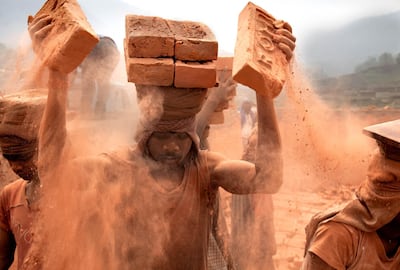
Kristine has seen some successes in the fight against slavery, like the case of an Indian village that fought for its freedom and bought a quarry of its own, as pictured by her in Pillars. The villagers' victory was hard-won, however. Abolitionists working undercover helped connect the villagers to a lawyer who could file a case for them. When the slaveholder heard of this, he burnt their village.
"[The villagers] were petrified … but one woman in the photograph said: 'We have nothing left to lose, and we're not going to give up', and they ended up getting a quarry lease for themselves," she says. Though the women continue to do hard labour, they are now paid for it. "They have this wonderful sense of empowerment. They have schools in their village. Their children are going to school, and that's because of activists on the ground helping," Kristine says.
Documenting these cases can take its toll, and Kristine explains that continuing her practice of photographing different cultures offers a respite. "I've learnt to not just do work on slavery because it is unnerving to be constantly intimate with the underbelly of society," she says. "I've learnt to balance it out with my other work, which is about unity, dignity and beauty. I get to sit at the feet of elders who impart wisdom about their lives." Her next trip is to Mongolia, where she will spend time with eagle hunters.
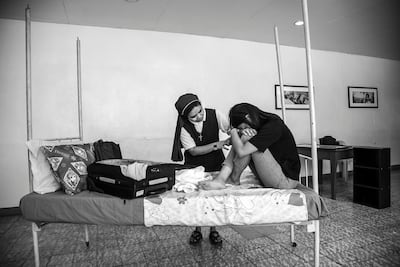
Her work against modern-day slavery continues, through projects and talks. Last year, she presented exhibitions on the work of Talitha Kum, an anti-trafficking group of Catholic nuns, with whom she spent 18 months travelling around Italy, Guatemala, Mexico and Thailand.
Her images of modern-day slavery have been made into books and fine prints, and portions of the sales go to Free the Slaves. Kristine has also established the Human Thread Foundation, which builds on her mission to spread awareness by teaching students how to identify signs of slavery in their communities.
Modern-day slavery may still persist, but in her decade of fighting against it, Kristine says that she has seen a greater willingness from the United Nations and governments to combat the issue.
“We have a long way to go, but the idea that people are actually focusing on it, that’s utterly meaningful to me,” she says. In the meantime, she continues to bear witness.
